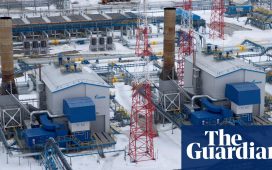
All that is bad news for India, the world’s third-largest crude importer and consumer.
Our official data for 2022-23 is quite dire: consumption of petroleum products grew 10.2%, led by 13.4% growth in petrol, 12% in diesel, and 47% in aviation turbine fuel. As the domestic production fell by 1.7% in 2022-23, our dependence on imported crude has gone up to 87.8%. Our annual crude import bill was $158 billion, up 31% over 2021-22, despite discounted Russian supplies.
In volume terms, crude imports increased by 9.4% to 232.4 million metric tonnes. Production of petroleum products grew 4.8% and their imports increased by 11.7%, but their exports fell by 4.1%. Some of the rise was due to the low base effect during 2021-22 when the second Covid-19 wave occurred. The picture was only slightly brighter on the natural gas/LNG front, where we have nearly 50% self-reliance and the global prices have fallen.
The annual rise in our oil consumption seems to have moderated to 5.9% in the first half of FY24.
At a separate but interconnected level, the consumption of coal, a source of two-thirds of our thermal power generation, is racing ahead of our domestic production. The demand for coal in FY23 was 1,087 mt, up 5.7% over the previous year. Although India’s coal production grew by 14.7% on a year-on-year basis to hit a record high of 892 mt, imports were still up by 22% at 254 mt. As economic growth and climatic changes constantly push up the demand for power to new heights, the use of coal despite its “dirty” epithet, is set to rise inexorably in the foreseeable future. Despite a robust rise in India’s renewable energy capacity, for several reasons, it is yet to make its full impact, forcing the economy to fall back to more reliable coal-based power.India’s “energy poverty” is today perhaps the biggest constraint on the sustainability of the fast growth of our economy. On a per capita basis, an average Indian consumes only half the power his global peer does. Consequently, our energy consumption is set to grow with population, urban migration, and conspicuous consumption.
How is this trend to be reconciled with greater self-reliance, controlling the current account deficit, sustaining economic growth, and mitigating climate change as well as pollution?
To square this energy circle, we need to give high priority to ensure adequate, reasonably priced and preferably non-polluting energy to sustain our socioeconomic growth. There is an urgent need for a comprehensive, integrated but granular analysis, identifying the relevant energy pathways needed to sustain our economic growth over the medium-to-long term and pursue them at both technical and diplomatic levels.
India has, in a digressed manner, already taken steps to address several of these issues. These include technical initiatives such as LED bulbs, solar, wind and biofuel energy, fast breeder nuclear power, more efficient and less polluting thermal plants, promoting EVs, green hydrogen and better logistics. Here, the ongoing work needs to be accelerated in Gati-Shakti mode. We can also do more to switch to green steel and make our metros and railways more user-friendly to replace the fossil-guzzling roadways for both metropolitan mass transit and freight.
The initiatives at home need to be complemented by a concerted diplomatic drive abroad. This should be aimed at fostering energy complementarities with fossil fuel exporters such as in the Gulf, Indonesia, Mozambique, Guyana, etc. through cross-investments, long-term deals, and strategic reserves. We should also earmark adequate funds for the acquisition of energy-related assets abroad, such as fossil fuels, lithium, rare earths, etc.
Above all, we need to evolve an integrated approach, prioritising energy self-sufficiency, particularly in fossil fuels, in its own right. If done right, this would not only free us from the fickle and slippage-prone global energy market, but it would also create new venues for our economic growth.
The author served as India’s envoy to Algeria and Nigeria










